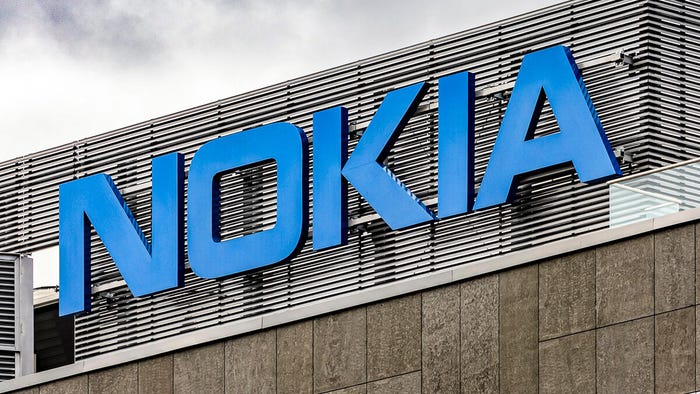By the end of this year, Nokia hopes to count up to 20 different customers for its various software-as-a-service (SaaS) offerings. The company launched the effort one year ago.

Roughly a year since it first announced the effort, Nokia's Mark Bunn said the company expects to ink deals with 10-20 different customers by the end of this year for its various software-as-a-service (SaaS) offerings.
According to Bunn, those customers include both big and small mobile network operators as well as enterprises, though he declined to name any of them.
Nokia also raised its estimates for the overall size of the SaaS market opportunity it's chasing. Previously, Nokia estimated that the value of the market, between 2021 and 2025, totaled $3.1 billion. Now it believes that figure is $3.6 billion. And Bunn – Nokia's SVP of cloud and network services – said Nokia expects to capture a significant part of that market opportunity.
Figure 1:  (Source: Paweł Czerwiński on Unsplash)
(Source: Paweł Czerwiński on Unsplash)
Nokia initially launched its SaaS software subscription business in November 2021 with services like automated security, but has since been bulking it up with other offerings around network analytics, energy usage and – most recently – core networking. Bunn said Nokia offers ten different SaaS products today, and it expects to launch several more throughout 2023.
Looking to the future
During a recent media event, Bunn offered a broad glimpse into Nokia's efforts to sell subscriptions to its various software products. The effort is critical for the company considering the vast majority of Nokia's business sits firmly in the realm of hardware, whether that's 5G radios or optical transport components.
"Think of it as launching a startup within Nokia," Bunn said of Nokia's new SaaS business. Likely as a result, Bunn did not offer any firm details – whether for finances or customers – regarding the company's SaaS.
"There's going to be negative profitability, and that's planned," Bunn said of Nokia's SaaS business. But he said that, after a "reasonable amount of time," the business would move toward profitability.
Bunn said Nokia's SaaS subscription business model could ultimately benefit both Nokia and its customers by eliminating spending spikes around hardware purchases. Instead, with a subscription, both Nokia's profits and its customers' spending would be more predictable.
Bunn added that Nokia's customers typically are looking at two- to three-year service contracts for SaaS services, sometimes after a six-month trial.
So far Nokia's SaaS business remains a tiny portion of its broader operation. But Nokia is undoubtedly looking to follow the same path as Cisco, which has loudly discussed its efforts to shift from a hardware to a software subscription business. However, the financial analysts at Raymond James noted recently that Cisco's software business remains "stuck" at roughly 30% of the company's overall revenues.
Hyperscaling
Bunn said Nokia's SaaS business runs exclusively in the cloud, and primarily on hyperscale platforms from providers like Microsoft, Google Cloud and Amazon Web Services (AWS). Bunn described such cloud hyperscale platforms as "a very mature offering" that Nokia can develop products for.
Importantly, he said Nokia does not support telecom operators' own private cloud platforms. He said the company's SaaS business only runs on hyperscale clouds.
However, Bunn said the hyperscalers are not uniform. "Some of them have very different strengths," he said. For example, he said that one Nokia security product only runs on the Microsoft Azure cloud because of the way Microsoft runs that platform.
Bunn said that, at the moment, Nokia is "keeping our options open" and that the company hasn't selected a preferred hyperscaler – yet. "We will be making more deliberate and conscious decisions" on that topic in the future, he said, suggesting that Nokia may limit its support to only one or two hyperscalers in the future as the market matures.
The cloud is rapidly gaining a foothold inside telecom networks. Research firm Omdia found that, in a recent survey, 12% of telecom executives believe the public cloud is the optimal place to run network functions.
That doesn't necessarily come as a surprise. After all, AWS, Microsoft and Google Cloud have all made their intentions plain: They want to bring the telecom industry into the cloud. That effort initially centered on pushing telecom network operators' standard IT functions into the cloud – but is now expanding to include operators' core network functions.
According to some analysts, AWS has pulled ahead of Google and Microsoft in the pursuit of telecom globally. But the market is still in its early days.
Related posts:
– Mike Dano, Editorial Director, 5G & Mobile Strategies, Light Reading | @mikeddano
About the Author(s)
You May Also Like











